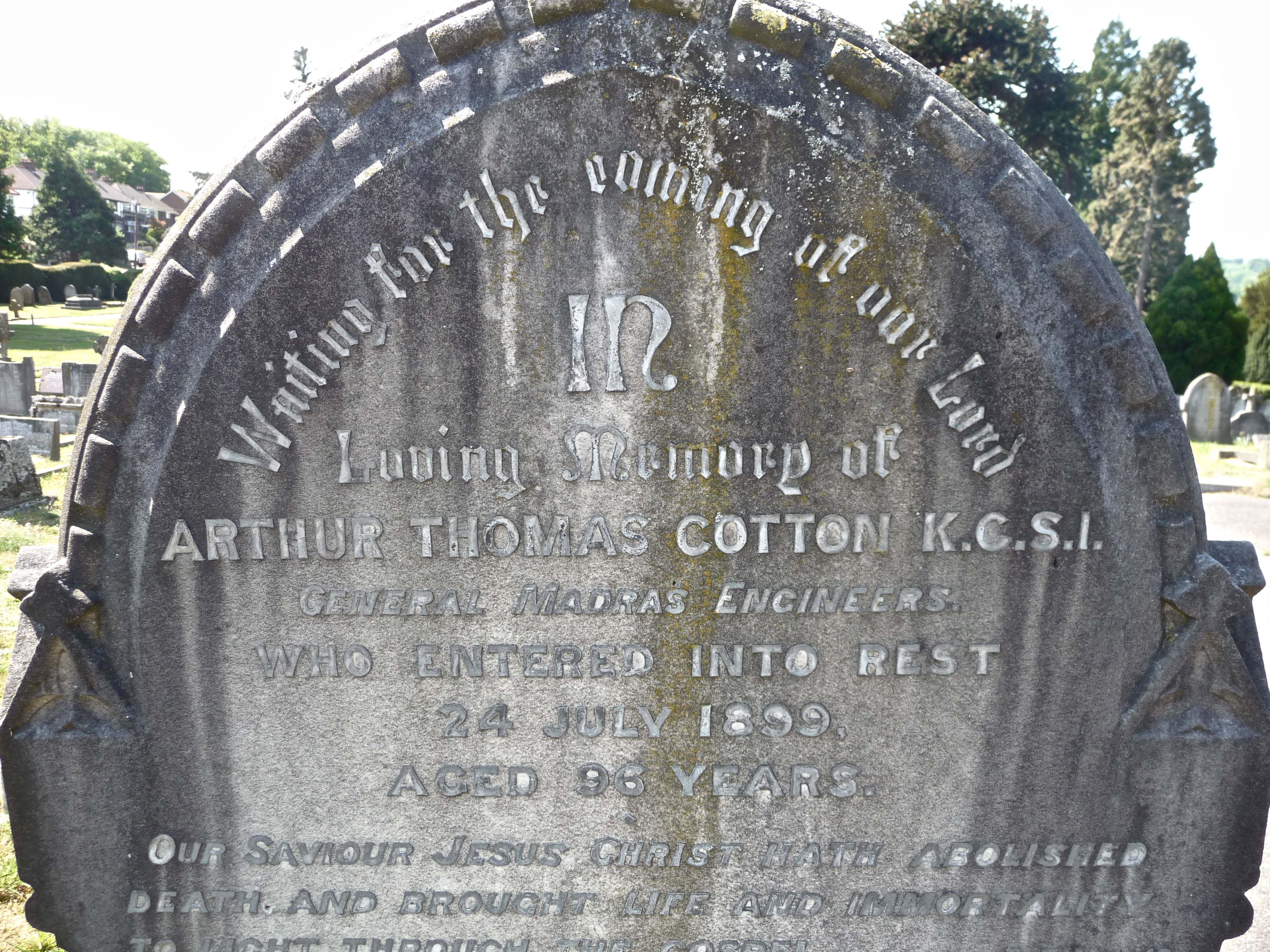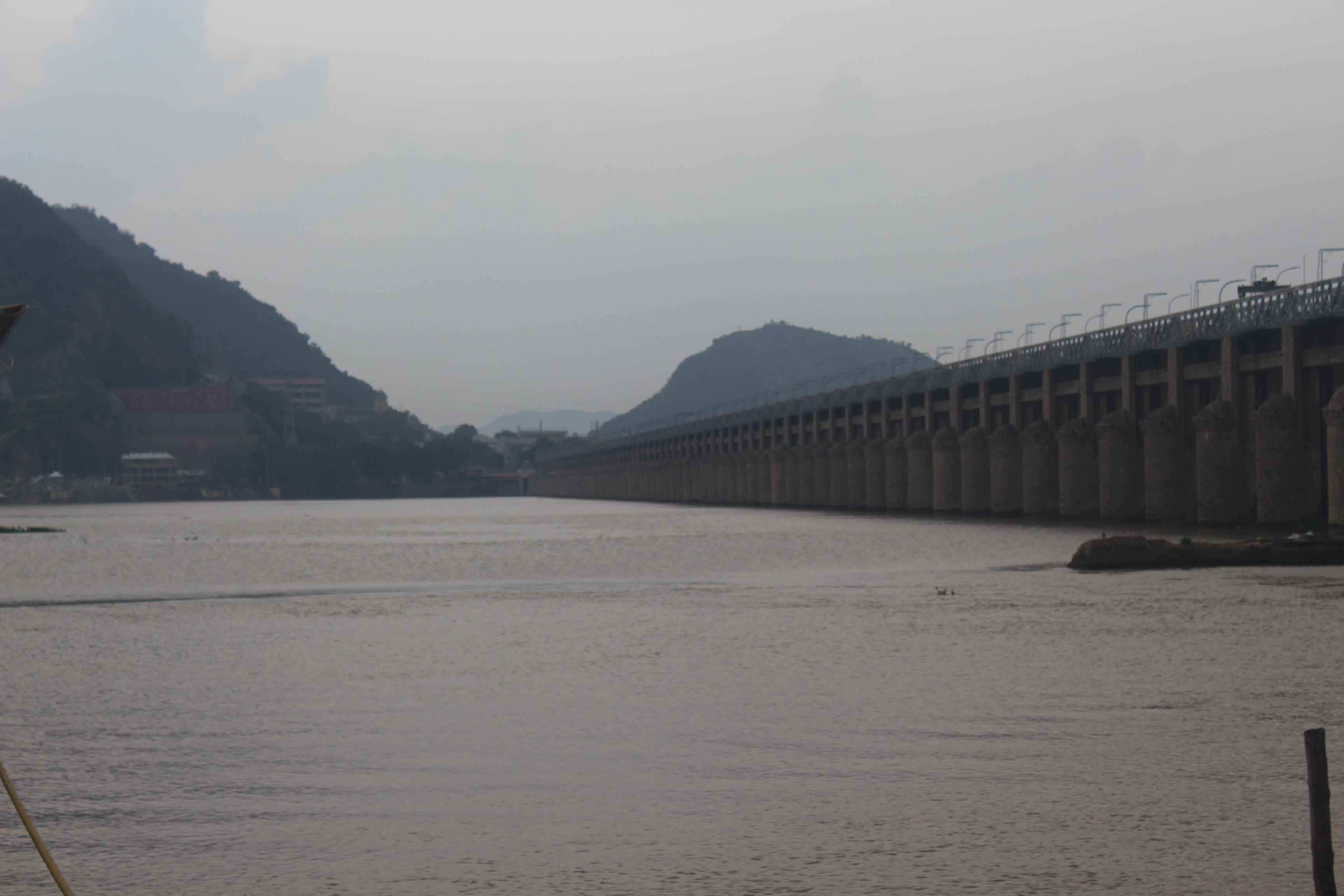|
Ryves Canal
Ryves Canal is a canal that originates from Krishna river and flows through the city of Vijayawada in the Indian state of Andhra Pradesh. Under the Krishna Eastern canal system, there are three gravity canals, namely the Eluru canal, Ryves canal and Bandar (Machilipatnam) canal were dug during British time, mainly for irrigation and navigation purposes. The Ryves canal has a length of 57.70 km and an anicut of 1,75,000 acres with a designed discharge of 4250 cusecs. History There was a disastrous famine during 1833 which wiped about 40% of the population in Krishna district. The government under East India Company constructed an anicut and canal system during 1852-55 to irrigate 5.80 lakh acres with an expenditure of Rs 0.772 million. The anicut proposal was formulated and designed by Sir Arthur Cotton and carried out by Captain Charles Orr. The anicut served for about 100 years and a major breach occurred in September 1952. A new barrage namely Prakasam barrage The P ... [...More Info...] [...Related Items...] OR: [Wikipedia] [Google] [Baidu] |
Vijayawada
Vijayawada, formerly known as Bezawada, is the second largest city in the Indian state of Andhra Pradesh and is a part of the state's Capital Region. It is the administrative headquarters of the NTR district. Its metropolitan region comprises NTR and parts of Krishna and Guntur districts.Vijayawada lies on the banks of Krishna river surrounded by the hills of Eastern Ghats, known as Indrakeeladri Hills. It geographically lies on the center spot of Andhra Pradesh. The city has been described as the commercial, political, cultural and educational capital of Andhra Pradesh It is the second largest city in Andhra Pradesh with a population of 17,23,000 in 2021, estimated population of 19,91,189 in the Vijayawada Metropolitan Area. It is one of the fastest growing urban areas in India and among the top 10 fastest growing cities in the world according to Oxford Economics report. Vijayawada is considered to be a sacred place for residing one of the most visited and famous temple ... [...More Info...] [...Related Items...] OR: [Wikipedia] [Google] [Baidu] |
Indian State
India is a federal union comprising 28 states and 8 union territories, with a total of 36 entities. The states and union territories are further subdivided into districts and smaller administrative divisions. History Pre-independence The Indian subcontinent has been ruled by many different ethnic groups throughout its history, each instituting their own policies of administrative division in the region. The British Raj mostly retained the administrative structure of the preceding Mughal Empire. India was divided into provinces (also called Presidencies), directly governed by the British, and princely states, which were nominally controlled by a local prince or raja loyal to the British Empire, which held ''de facto'' sovereignty ( suzerainty) over the princely states. 1947–1950 Between 1947 and 1950 the territories of the princely states were politically integrated into the Indian union. Most were merged into existing provinces; others were organised in ... [...More Info...] [...Related Items...] OR: [Wikipedia] [Google] [Baidu] |
Andhra Pradesh
Andhra Pradesh (, abbr. AP) is a state in the south-eastern coastal region of India. It is the seventh-largest state by area covering an area of and tenth-most populous state with 49,386,799 inhabitants. It is bordered by Telangana to the north-west, Chhattisgarh to the north, Odisha to the north-east, Tamil Nadu to the south, Karnataka to the west and the Bay of Bengal to the east. It has the second longest coastline in India after Gujarat, of about . Andhra State was the first state to be formed on a linguistic basis in India on 1 October 1953. On 1 November 1956, Andhra State was merged with the Telugu-speaking areas (ten districts) of the Hyderabad State to form United Andhra Pradesh. ln 2014 these merged areas of Hyderabad State are bifurcated from United Andhra Pradesh to form new state Telangana . Present form of Andhra similar to Andhra state.but some mandalas like Bhadrachalam still with Telangana. Visakhapatnam, Guntur, Kurnool is People Capital ... [...More Info...] [...Related Items...] OR: [Wikipedia] [Google] [Baidu] |
Anicut
An anicut (Originated from Tamil language அணைக்கட்டு - Aṇaikaṭṭu and Kannada Kannada (; ಕನ್ನಡ, ), originally romanised Canarese, is a Dravidian language spoken predominantly by the people of Karnataka in southwestern India, with minorities in all neighbouring states. It has around 47 million native s ... language ಆಣೆಕಟ್ಟು - Āṇekaṭṭu) is a masonry check dam that is constructed across a stream to impound water for maintaining and regulating irrigation.“Anicut.” The Merriam-Webster.com Dictionary, Merriam-Webster Inc., https://www.merriam-webster.com/dictionary/anicut. Accessed 1 January 2020. The water stored behind an anicut can be used for irrigation of crops or drinking water for humans and livestock. They also are used to increase the residence of water to recharge groundwater, especially wells located downstream. Anicuts are also used in wildlife sanctuaries to provide sufficient water hole for wil ... [...More Info...] [...Related Items...] OR: [Wikipedia] [Google] [Baidu] |
Arthur Cotton
General Sir Arthur Thomas Cotton (15 May 1803 – 24 July 1899) was a British general and irrigation engineer. Cotton devoted his life to the construction of irrigation and navigation canals throughout British India. He helped many people by building the Dowleswaram Barrage ( Rajamahendravaram), the Prakasam Barrage and the Kurnool Cuddappah Canal (K. C. Canal). His dream was only partially realised, but he is still honoured in parts of Andhra Pradesh and Tamil Nadu for his efforts. The Sir Arthur Cotton Museum has been built in his honour in Rajamahendravaram, Andhra Pradesh. The museum holds approximately one hundred images and 15 machine tools that Cotton used when constructing the barrage in Andhra Pradesh from 1847 to 1852. He entered the Madras Engineers in 1819 and fought in the First Burmese War. He was knighted in 1861. He was the father of the evangelist Elizabeth Hope. Biography Arthur Cotton was born on 15May 1803 at Combermere, the tenth son of Henry Cal ... [...More Info...] [...Related Items...] OR: [Wikipedia] [Google] [Baidu] |
Prakasam Barrage
The Prakasam Barrage stretches 1223.5 m across the Krishna River connecting Vijayawada, NTR and Mangalagiri Tadepalle Municipal Corporation, Guntur districts in Andhra Pradesh, India. The barrage serves also as a road bridge and spans over a lake. The three canals associated with the barrage run through the city of Vijayawada, crossing it and giving it a Venetian appearance. The idea of constructing a dam across the river Krishna dates back to 1798. It began in the hands of captain Buckle and was revised in 1839 and 1841 by Captain Best and Captain Lake. After the endorsement of Major Cotton, the board of Directors of the East India Company approved it on 5 January 1850. The dam was started in 1852 and completed in 1855. It cost Rs 1.75 crore in those days and seems to have paid the then government a return of 18%. It used to irrigate 7 lakh acres. Later, the State Government constructed a bridge that was named after Tanguturi Prakasam, the first Chief Minister of Andhra (a ... [...More Info...] [...Related Items...] OR: [Wikipedia] [Google] [Baidu] |
Geography Of Vijayawada
Geography (from Ancient Greek ; combining 'Earth' and 'write', literally 'Earth writing') is the study of the lands, features, inhabitants, and phenomena of Earth. Geography is an all-encompassing discipline that seeks an understanding of Earth and world, its human and natural complexities—not merely where objects are, but also how they have changed and come to be. While geography is specific to Earth, many concepts can be applied more broadly to other Astronomical object, celestial bodies in the field of planetary science. Geography has been called "a bridge between natural science and social science disciplines." Origins of many of the concepts in geography can be traced to Greek Eratosthenes of Cyrene, who may have coined the term "geographia" (). The first recorded use of the word Geography (Ptolemy), γεωγραφία was as the title of a book by Greek scholar Claudius Ptolemy (100 – 170 AD). This work created the so-called "Ptolemaic tradition" of geography, w ... [...More Info...] [...Related Items...] OR: [Wikipedia] [Google] [Baidu] |



